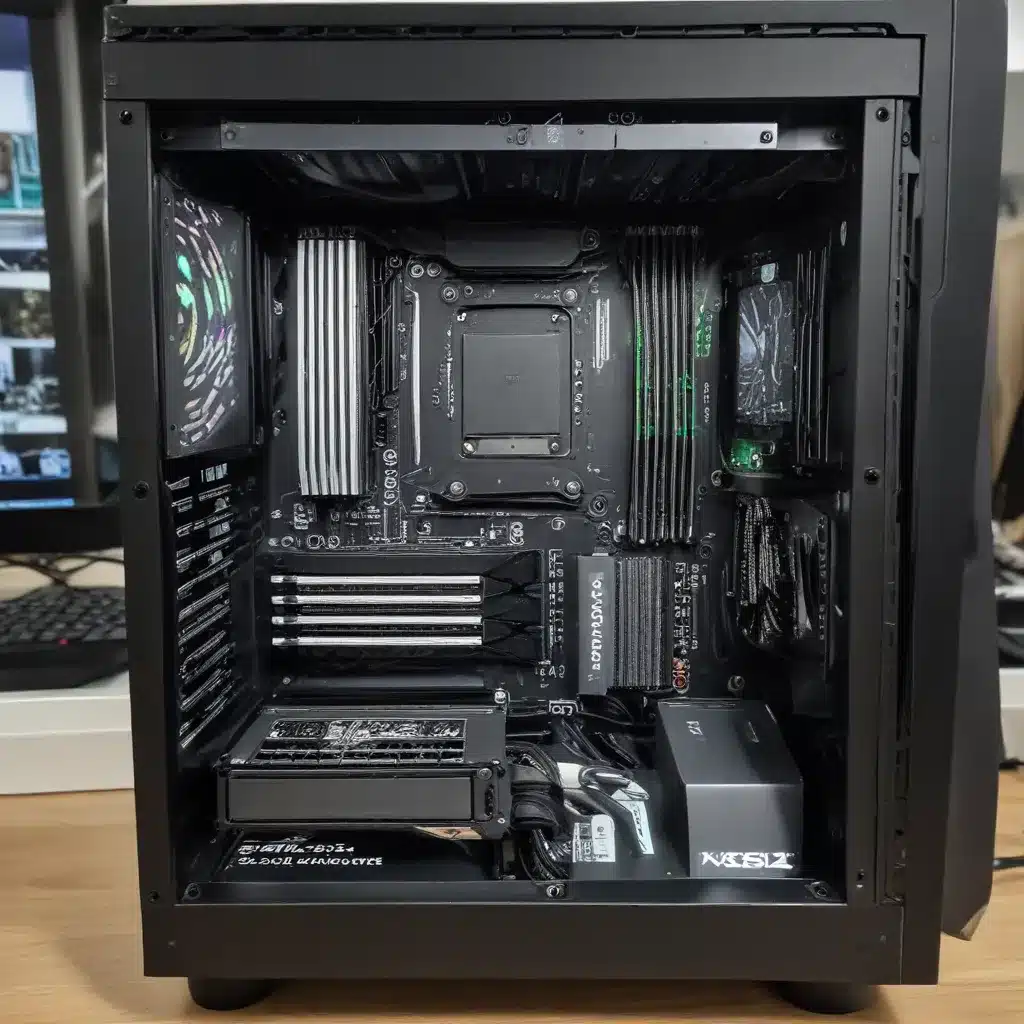
Buying a New PC: Your Comprehensive IT Guide
Upgrading your computer is an exciting prospect, but it can also be a daunting task, especially for those not well-versed in the ever-evolving world of technology. As an experienced IT consultant, I’m here to guide you through the process of buying a new PC, ensuring you make an informed decision that meets your needs and budget.
Hardware Considerations
When it comes to a new PC, the hardware components are the foundation upon which everything else is built. Let’s delve into the key elements you should consider.
Processor (CPU)
The CPU, or central processing unit, is the brain of your computer. While clock speed and core count used to be the primary metrics, modern CPUs have become far more nuanced. Single-threaded performance, driven by instructions per cycle (IPC), is often more important for everyday tasks and gaming.
For most consumers, a mid-range CPU like the Intel Core i5-12400F or AMD Ryzen 5 5600X will provide ample power for a wide range of applications. However, if you have specific needs, such as content creation or heavily multi-threaded workloads, stepping up to an Intel Core i7-12700K or AMD Ryzen 7 5800X may be worth considering.
RAM
Random Access Memory (RAM) is the temporary storage your computer uses to run programs and access data quickly. Dual-channel configuration, where you have two memory modules, is crucial for optimal performance. This allows your CPU to access memory in parallel, akin to having two lanes on a road rather than one.
For most users, 16GB of DDR4-3600 RAM at CL16 is the sweet spot, providing a balance of speed and affordability. If you’re a power user or plan to keep your PC for several years, 32GB may be worth the investment, but 16GB is sufficient for the vast majority of tasks.
Storage Devices
Gone are the days of relying solely on traditional hard disk drives (HDDs). Solid-state drives (SSDs) have become the norm, offering lightning-fast boot times and near-instant application loading. For your operating system and primary applications, an NVMe SSD like the WD Blue SN570 or Kingston A2000 is an excellent choice.
HDDs still have their place for secondary storage, providing vast amounts of space at a lower cost per gigabyte. However, be mindful that even a high-end HDD will struggle to match the responsiveness of an SSD, especially when it comes to gaming or multitasking.
Software Needs
While hardware is the foundation, the software you intend to run on your new PC is equally important. Consider the following:
Operating System
Windows 10 or Windows 11 are the predominant operating systems for most desktop PCs. Both offer a familiar user interface and a wide range of compatibility with applications and games. If you’re more comfortable with a different OS, such as macOS or a Linux distribution, be sure to research the hardware compatibility and available software options.
Productivity Software
Whether you’re a student, professional, or home user, productivity software is a key consideration. The Microsoft Office suite (Word, Excel, PowerPoint) is a popular choice, but there are also excellent free and open-source alternatives like Google Workspace and LibreOffice.
Entertainment & Gaming
If gaming is a priority, ensure your new PC has a dedicated graphics card that can handle the games you enjoy. For casual gaming, integrated graphics may suffice, but for more demanding titles, an NVIDIA GeForce RTX 3060 or AMD Radeon RX 6600 XT would be a better fit.
Beyond gaming, consider media consumption needs, such as streaming services, video editing, or music production. Ensure your new PC has the necessary ports, storage, and processing power to support your entertainment and creative activities.
Performance Factors
When evaluating a new PC, it’s essential to consider not just the individual components, but how they work together to deliver the performance you need.
System Requirements
Take the time to research the recommended system requirements for the software and games you plan to use. This will help you determine the minimum specifications needed to ensure a smooth, lag-free experience.
Hardware Compatibility
Ensure that all the components you select are compatible with each other. Use resources like PC Part Picker to check for any potential issues, such as CPU socket type or RAM compatibility.
Benchmarking
Look for real-world performance benchmarks from trusted sources like Gamers Nexus, Hardware Unboxed, and Tom’s Hardware. These will give you a more accurate picture of how different hardware configurations perform in various scenarios, helping you make an informed decision.
PC Purchasing Process
Now that you’ve considered the hardware and software needs, it’s time to explore your options for acquiring a new PC.
Retail Channels
Many major electronics retailers, such as Curry’s PC World, John Lewis, and Argos, offer a wide selection of pre-built PCs from reputable brands like HP, Dell, and Lenovo. These can be a convenient option, especially if you’re looking for a hassle-free setup.
Online Marketplaces
Sites like Amazon, eBay, and Overclockers UK provide a vast array of both pre-built and custom-configured PCs. While the selection may be broader, it’s essential to research the seller’s reputation and read reviews to ensure you’re getting a quality product.
Custom-Built Options
If you’re comfortable with the technical aspects or want to tailor your PC to your specific needs, building your own system can be a rewarding experience. Services like PC Specialist and Scan Computers offer custom-built PCs, allowing you to select the exact components you desire.
Regardless of your purchasing method, be sure to thoroughly research your options, read reviews, and consult with IT professionals or enthusiastic communities like r/buildapc for guidance.
Remember, buying a new PC is an investment, so take the time to ensure you make the right choice for your needs and budget. With the right hardware and software, your new PC will be a powerful and reliable tool, ready to tackle all your computing tasks, from work to play.












